I don't do it to "native garden" per se, but mostly to dabble and see if/how different species grow, and what they look like from sprout to flower to fruit. However, it is quite handy that many CA natives like it dry. And the native bees in my backyard sure are happy.
Well, over the last 3 seasons of dabbling I've accumulated around 50 native species, in dribs and drabs, in pots and in the ground.
A few grew, but never reseeded. Others reseeded with vigor, and had to be weeded.
As an eye opener for 2013, here are 16 species from 2012 - roughly in order of appearance.
The native season in my yard always starts in late January with my pair of stars. Shooting stars. Which are wonderfully perennial, but take 7 years to go from seed to blooming, so I bought these at a CNPS chapter meeting in 2010 from a master grower with far, far more patience than I.

Cleveland's Shooting Stars, Dodecatheon clevelandii
My first larkspurs bloomed in 2012. Only took 2 years from seed to 1st flowers. They're also perennials, so it'll be interesting to see how many years they last.
I thought the species I planted was Canyon Larkspur, Delphinium umbraculorum, the CNPS list 1B rarity. But the flowers were nearly white, and in the wild they're a more classic purple. Hmmm... Other characters key properly though. But then, Delphs aren't my strength.
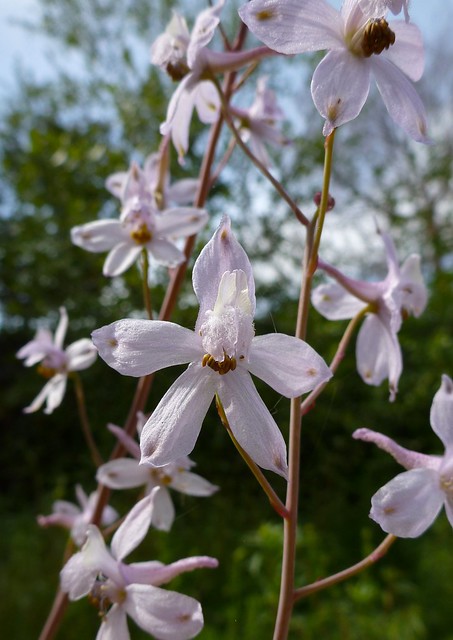
Canyon Larkspur (I think), Delphinium umbraculorum
Also had a patch of Purple Chinese Houses. It's an annual species, but seems to reseed easily.
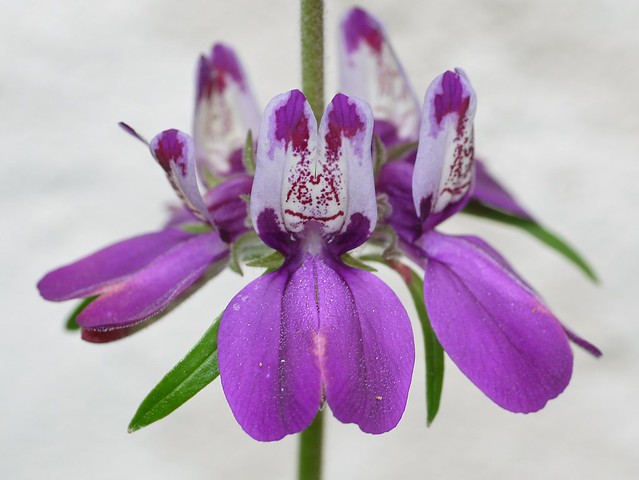
Purple Chinese Houses, Collinsia heterophylla
And my pot of various Triteleias and Brodiaeas gave up its first blooms in 2012. Appears Trits may grow faster than Brods, but I've only just begun to keep track.
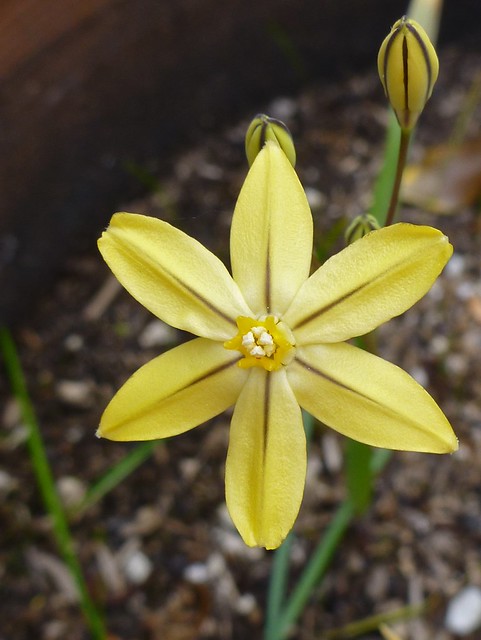
Prettyface, Triteleia ixioides
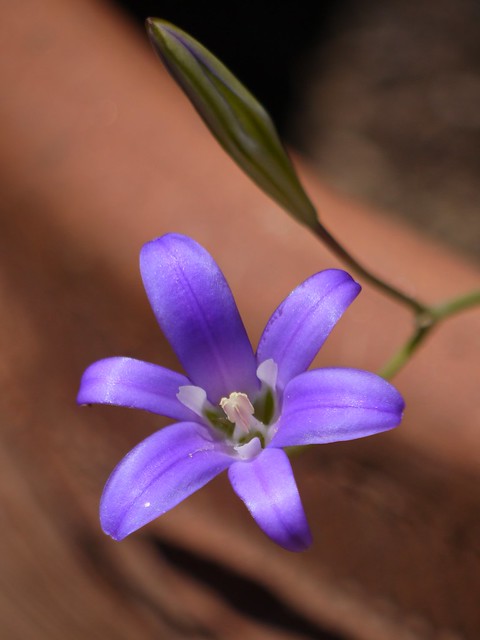
Harvest Brodiaea, aka Elegant Clusterlily, Brodiaea elegans
Of my 6 species of Clarkias, these 3 were my faves in 2012 - rubicunda because it's bright and crazy prolific, speciosa because it's long lasting and delicate, and rhomboidea because it's cool, likes shade, and I didn't expect it to take from the few seeds I planted.
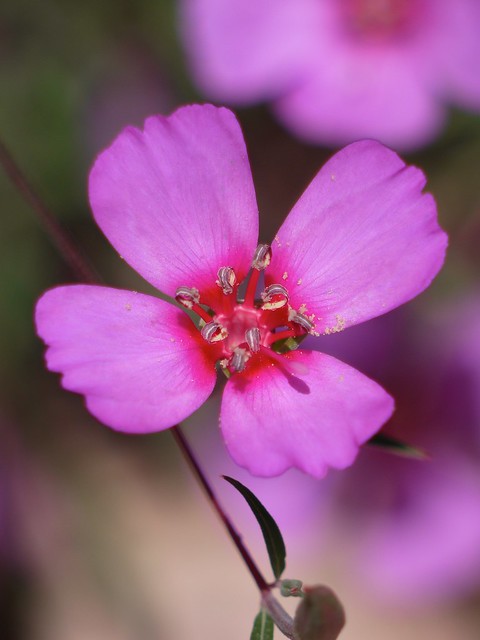
Ruby Chalice Clarkia, Clarkia rubicunda
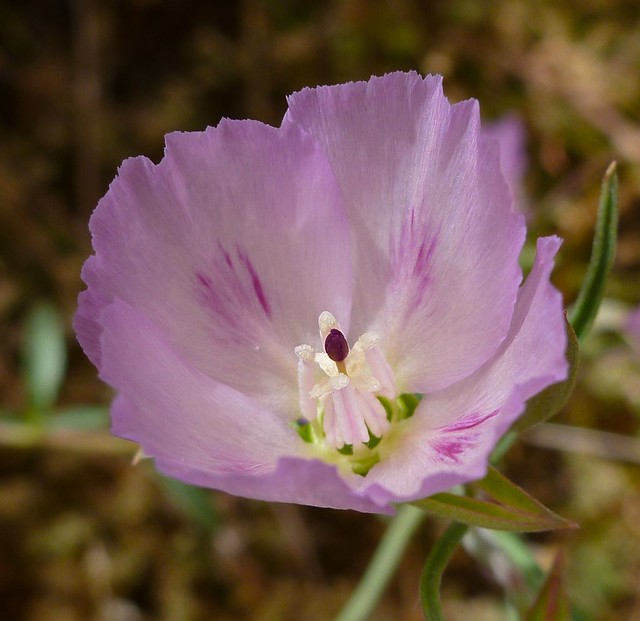
Redspot Clarkia, Clarkia speciosa
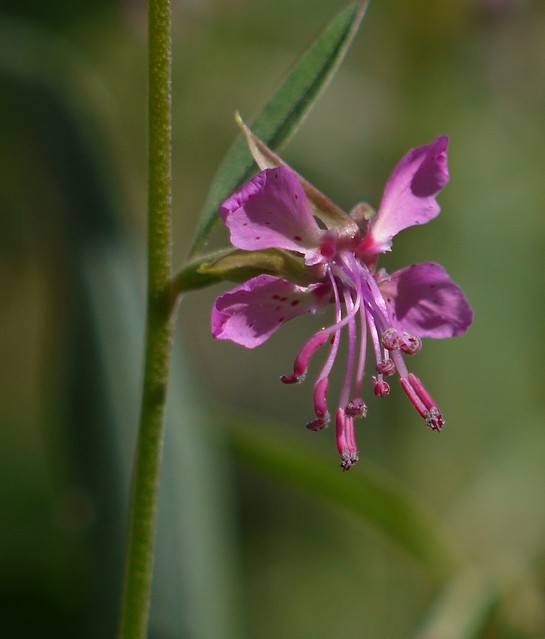
Diamond Fairy Fan, Clarkia rhomboidea
I grew 2 native clovers - a shade-lover for the flowers, and a sun-lover for the leaves.
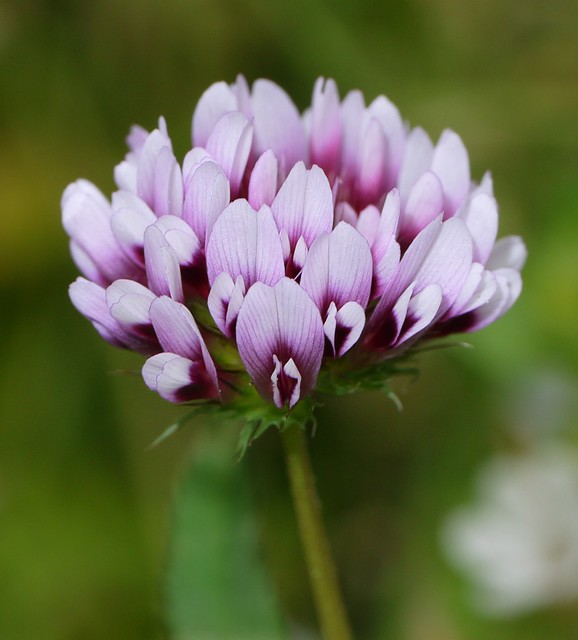
Tomcat Clover, Trifolium willdenovii
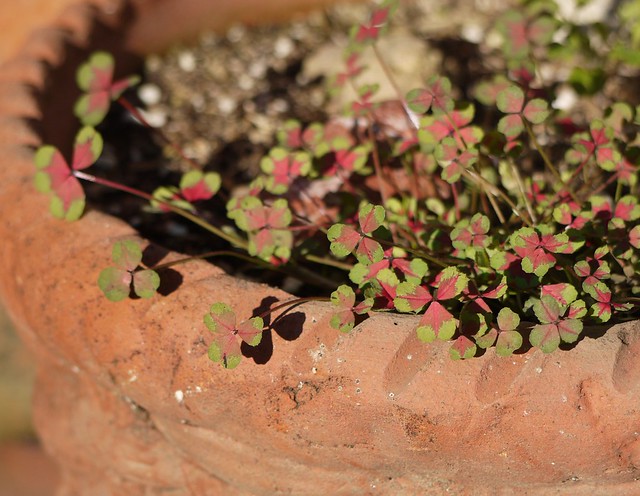
Maiden Clover (CNPS cultivar), Trifolium microcephalum
And a pot o' Calochortus bulbs, too. Growing them in a pot allows maximum control of the soil, water and sun they get. This pot has well-draining sandy-clay, which seems to work nicely for interior California foothill and grassland species.
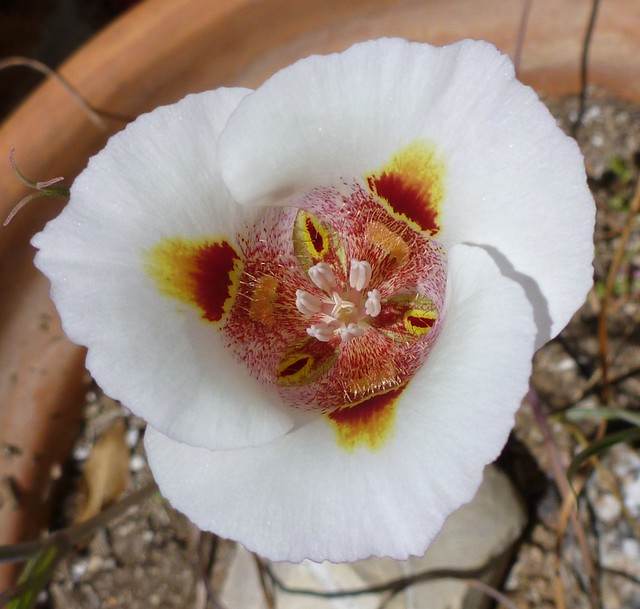
Butterfly Mariposa Lily, Calochortus venustus
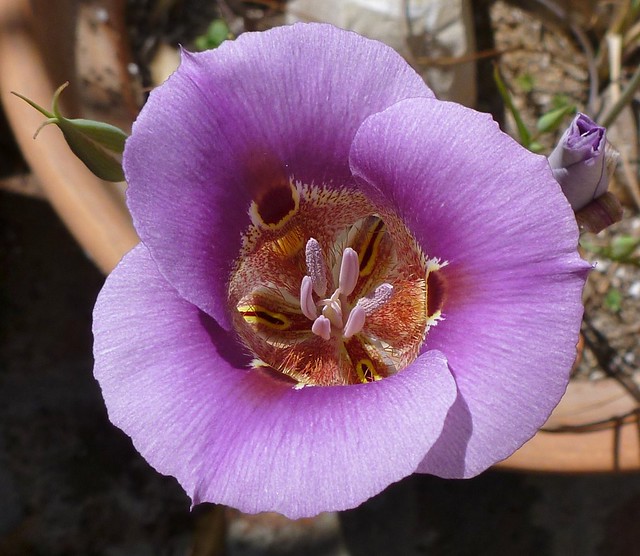
Also Butterfly Mariposa Lily, Calochortus venustus (a highly variable species)
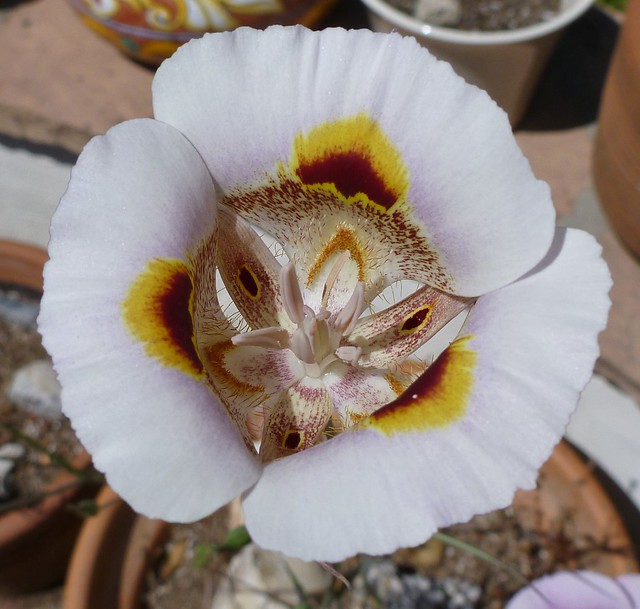
Superb Mariposa Lily, Calochortus superbus
Finally, late summer bloomers are always a treat, so I often give their seeds a go. These 4 from the sunflower family all bloomed June through September, well after all else was finished in my yard. The Elegant Tarweed even carried on into late October.
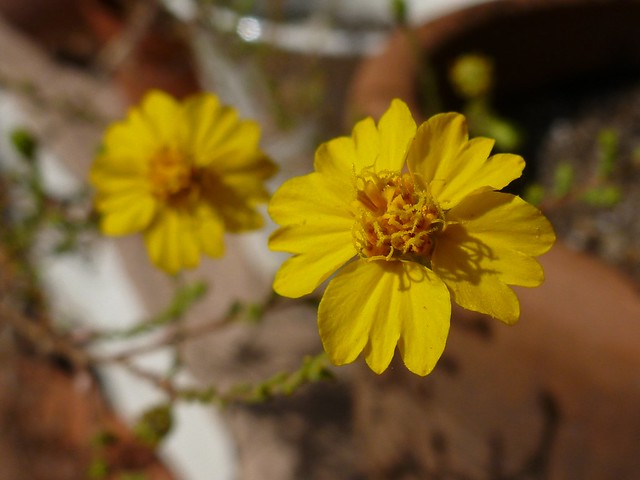
Tehachapi Tarweed, Holocarpha heermannii
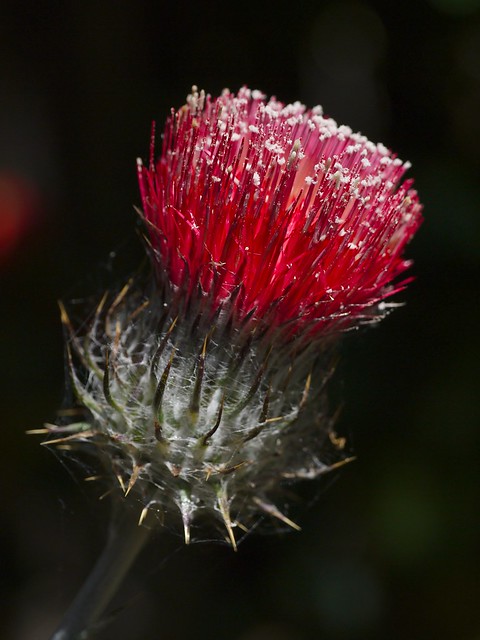
Venus Thistle, Cirsium occidentale var. venustum

Hoary Aster, Dieteria canescens
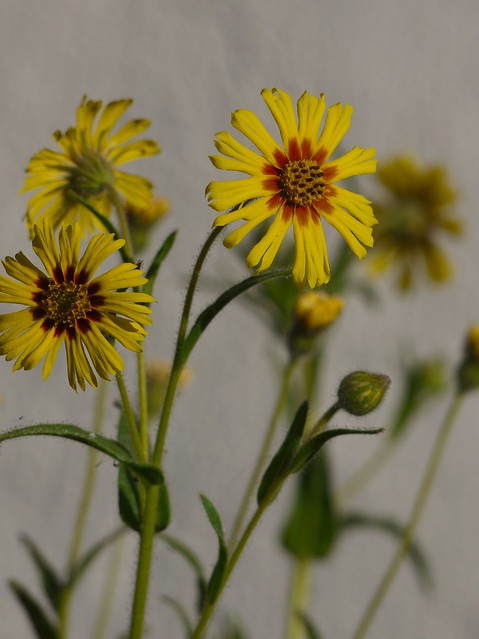
Elegant Tarweed, Madia elegans
I wonder what will pop up this year?
====
References:
- California Native Plant Society (CNPS)
- CNPS Santa Clara Valley Chapter
- CNPS - Rare Plant Program and Ranking System
- The Jepson Herbarium - Jepson eFlora
- Calflora.org
- Nature of a Man (this blog) - Hymenoptera Hotel

That's outstanding. Good variety too. Interesting that shooting stars take so long to go from seed to flower.
ReplyDeleteIsn't that crazy? 7 years. Makes you appreciate them even more in the wild. The amazing CNPSer that grows them turns 91 this year, so they may also be a fountain of youth. :)
DeleteHappy New Year to you...your blog and the activities it chronicles are a real gift. Thank you for sharing.
ReplyDeleteThanks much Jeannette. And Happy New Year back at ya.
DeleteYou have your own Venus Thistle! Very nice. I think my Calochortus are already throwing up shoots*. Seems really early. Don't know how that is going to work out for me.
ReplyDelete*Not sure this is even the right term
Yes - the venus rock. It's a biennial species though, so just has a basal cluster of leaves in year 1, and then blooms and dies in year 2. Hence, that one is gone. But they reseed pretty well, and I believe another is going to bloom this year.
Delete"Shoot" works fine, especially since Calochortus are monocots like grasses. Leaf works too, since that's what your shoot will become. And their timing is fine. Mine have been up for a month, and some already have full 12" long leaves. Bulb plants get their first leaves up early to start sucking up energy to build their bulb. If the season goes well, they build up reserves in the bulb and also bloom (once mature). If it goes poorly, they build reserves as long as they can, and then the leaves die back and the bulb waits til next season to try again.
Thanks for the clarification. I had said *I think because I had put those other bulbs in the same pot and now I have forgotten what the other species I planted even were. It looks like everything has sprouted and it was probably about the same time as you about a month ago. Mine aren't quite 12" but over 6". Will they flower mis-Summer like in the Sierra foothills, or a little sooner here on the coast because of the lack of snow and freezing temps?
DeleteCannot wait to see them.
Lovely plants, almost all familiar (we're in the same county), and fabulous shots! Here's a question: do you do anything to protect any of those lovelies from the ever-ravenous deer? Not sure which of those do and do not appeal to the Bambi palette, but that question frequently looms when I'm thinking about adding new plants...
ReplyDeleteI get around BB, but my actual home is in San Mateo County, on the SF Peninsula and edge of Santa Cruz Mountains. And, my little yard is too deep in suburban streets to see deer. Just big fat slugs and snails that mow down my seedlings.
DeleteAs for growing in Mariposa County - tall fences. Very tall fences. Seriously, as I think you've seen, deer will eat everything if hungry. Even the lilac that folks up there have planted all over because "deer don't like it." Yah, right. They don't like it - first. But... if you wander around, you'll notice that they don't seem to browse the native Clarkias, or tar plants, or the Trits and Brods and Mariposas. So they might be good to try. Other lilies, such as Frits and Liliums, are like chocolate to them though. Not so sure on shrubs, but I don't think they like flannelbush, which is beautiful. My reco - hike the habs in your area and look for natives the deer aren't browsing and try those.
beautiful photos! I just started planting CA native flowers in my garden in hope of enticing native bees.
ReplyDeleteI am so glad I came online to seek info about keeping mosquitoes out of my fountain. I somehow stumbled onto your blog and what a nice thing to happen. Such wonderful photography and your flowers are beautiful. I love the shooting stars!!! I just had to join and maybe one day when I have extra time, I may even create a few pages. Thank you so much for sharing. I look forward to browsing your blog in the future :)
ReplyDelete